Book Review: “Hemingway’s Widow” — Not a Pretty Story
By Roberta Silman
We now have a book that virtually closes the circle on Hemingway’s women, a biography that will be treasured by the author’s fans and scholars.
Hemingway’s Widow: The Life and Legacy of Mary Welsh Hemingway by Timothy Christian. Pegasus Books, 464 pages, $29.95.
 In May 1944 Ernest Hemingway arrived in London to do some war reporting for Collier’s Weekly on the invasion of France. He was only 44 years old but well known for his novels and his larger than life personality. His third marriage to the journalist Martha Gellhorn, with whom he seemed to be in a life or death competition about everything that mattered, was a mess. Martha was on her way to London, too. But Ernest’s brother Leicester was also in the city, working on a film crew with Robert Capa. To distract Ernest, he arranged that he and his brother would be at the famous White Tower restaurant on a night when Mary Welsh, a correspondent for Time, would be there with Irwin Shaw who, though married, was known as the sexiest man in Europe. Mary was still married to her first husband, Noel Monk, but that marriage, too, was falling apart. The die was cast.
In May 1944 Ernest Hemingway arrived in London to do some war reporting for Collier’s Weekly on the invasion of France. He was only 44 years old but well known for his novels and his larger than life personality. His third marriage to the journalist Martha Gellhorn, with whom he seemed to be in a life or death competition about everything that mattered, was a mess. Martha was on her way to London, too. But Ernest’s brother Leicester was also in the city, working on a film crew with Robert Capa. To distract Ernest, he arranged that he and his brother would be at the famous White Tower restaurant on a night when Mary Welsh, a correspondent for Time, would be there with Irwin Shaw who, though married, was known as the sexiest man in Europe. Mary was still married to her first husband, Noel Monk, but that marriage, too, was falling apart. The die was cast.
Ernest claimed he fell in love with Mary at first sight. Mary was not so sure. Still, she was in her late 30s, and Irwin had a wife back home. So, after a few months of totting up Ernest’s assets and liabilities, Mary entered into one of the most transactional marriages I have ever read about — a marriage that would catapult her to a fame she never could have imagined as an only child from a provincial town in Minnesota, and that would also be the cause of her descent into an ignominious death.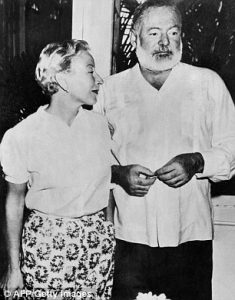
In keeping with what has become a “Hemingway craze” fueled by the Ken Burns documentary series on the author’s life (which I reviewed last year), we now have a book that virtually closes the circle on Hemingway’s women. Hemingway’s Widow is the story from Mary’s perspective of the last third of her husband’s tumultuous life. When there was a lot of evasion and double-talk about what was really happening, and why. When the effects of those concussions Hemingway suffered were not completely understood. When his inheritance of mental illness was downplayed, and his paranoia at the end of his life was attributed to his penchant for “embroidering.” Perhaps most important, when his tragic suicide could not be faced squarely and was presented as an accident. Thus, this biography will be treasured by Hemingway fans and scholars.
It is not a pretty story, though, especially for those of us who admire Hemingway’s work and who found the Burns series quite moving in its empathy for Ernest as a man. Because Mary is often as unlikable as Ernest could be. In some ways he had finally met his match in this fourth marriage, and there are times when they seem to be equals. But her ability to stand up for herself also brought out the worst in both of them, and then he got the upper hand. There were frequent fights. often after hard drinking, and the inevitable reconciliations, which sometimes read like a B movie. For all their intelligence and talent and generosity, Ernest and Mary were also extraordinarily childish and petty and stingy. These unpleasant characteristics surface in their relationships with Ernest’s children and their friends and acquaintances and the help at Vinca Figia, where they lived. So the question one has to ask is: Why did this marriage last until Ernest’s death?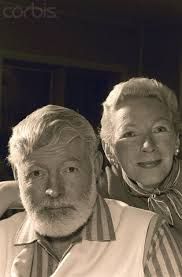

Timothy Christian answers that question in the book’s Prologue, and it reads like a Hemingway short story about an anonymous couple stuck in a small town in Wyoming when the pregnant wife hemorrhages from a burst fallopian tube. Doctors cannot find a vein to inject the needed plasma and blood and are about to give up on both mother and child when the husband takes over and is able to insert the needle intravenously, thus saving the mother’s life. That husband and wife were Ernest and Mary. After this ectoptic pregnancy they would never have a child, which they badly wanted. But Ernest had saved her life and Mary would never forget it. That episode in 1946 created an unbreakable bond between them.
This is a long biography, beginning with Mary’s story as a feisty young woman who comes to London in the late ’30s as a freelance correspondent. Scenes of London during World War II are exciting and interesting as we see her grow to become a respected reporter, no mean task for a woman at that time. We also see her become more confident, both intellectually and sexually, as she breaks new ground and is able to achieve some insight as to why her first marriage failed. By the time she meets Ernest she is more self-aware, yet also more naive than one might expect from a hardened war correspondent approaching 40. She is not only seduced by Ernest’s physicality, but also by his fame and money and the promise of an easier life than the one she might live as a divorcée journalist. So she embarks on an unlikely second marriage.
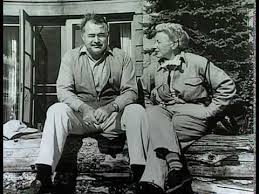
The story of that marriage is filled with a myriad of detail: How she convinces herself that her duty is no longer to herself and to her work but to Ernest; how she becomes a “housewife” in Cuba, living in the house Martha Gellhorn bought so she and Ernest could get out of the tumult of Havana; how Finca Vigia and Ernest’s boat, Pilar, and his work become the three-pronged center of their lives.
Christian presents a vivid picture, plunging the reader into their daily life, the visits from friends and frenemies, Ernest’s work on The Old Man and the Sea and Mary’s assistance. Her most important contribution: suggesting that Santiago, the “old man,” live, and not die. We feel Mary’s claustrophobia when Ernest becomes cruel and abusive; we are privy to their sexual games, revel in their travels to Africa and Europe, wince watching Mary’s unbelievable patience when Ernest “falls in love” with an Italian woman young enough to be his grandchild.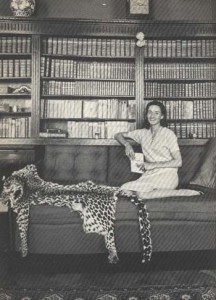
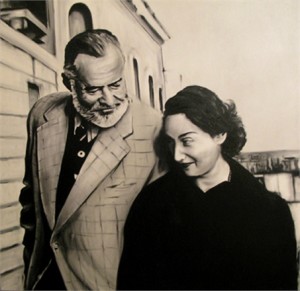
We are also puzzled by the unraveling of circumstances around Ernest’s death. By then, because of the events in Cuba, Ernest and Mary had moved to Ketchum, in Idaho. There he was working on getting his early diaries of Paris — which he called A Moveable Feast — in shape for publication. But Ernest was failing mentally, as well as physically. They had gone to the Mayo Clinic where he had electroshock therapy, the treatment for severe mental illness at the time. Somehow, he convinces his doctors he is fit to go home, and then, when he is back, he finds the keys to the gun closet on the kitchen shelf where they are always kept. Toward dawn on July 2, 1961, just a few weeks short of his 61st birthday, Ernest puts a gun in his mouth and shoots himself.
To save face, the news was that Ernest Hemingway died in an accident while he was cleaning a gun. No one believed it, although it would take years for the truth to come out. And, to his credit, Christian explores the reasons why Mary did not protect Ernest from himself, thus casting new light on their relationship.

Because fame came so early to Ernest and his renown was given its second wind after he was awarded the Nobel Prize in 1954, Hemingway’s life seemed very full and longer than it was, even though he died so young and so tragically. And because his fame has grown with the years (unlike Fitzgerald’s, which has diminished somewhat over time), it is easy to forget that there was still work to be completed, manuscripts to be gotten into the world, and the Hemingway legend to be protected and promulgated. Mary had her work cut out for her, and we see her doing it very competently for almost 20 years.
As readers of my earlier essay on Hemingway know, my husband and I actually went to Mary’s New York City apartment in 1978 when my first book of stories, Blood Relations, won honorable mention for the second PEN Hemingway Prize, which she had endowed as an annual prize for a previously unpublished writer. At that time Mary was at the top of her game, an eminent and celebrated hostess who had lots of people to court and be courted by. But she was not really all that interesting on her own, and by the early ’80s she began to descend into an inexorable alcoholism, dying of what the doctors called alcoholic dementia in 1986 at the age of 78.
Her demise was awful, and so was her legacy. Although there were small gifts to relatives and large bequests to the the Museum of Natural History, the United Negro College Fund and a small Black medical college, Mary did not adhere to Ernest’s wishes that she provide for his boys upon her death. By then, having garnered the royalties from the books and movies, she was a rich woman. Yet, Christian is blunt, “What was striking is that she left virtually nothing to Ernest’s sons.” Whether that was due to a mistake by Alfred Rice, Ernest’s lawyer, or to Mary’s choice to ignore Ernest’s wishes is not entirely clear, even after Christian did his own research into the matter. Whatever the case, she left anguish and resentment in the wake of her death.
So, although Christian ends his biography with a litany of her virtues, I was left with a bad taste in my mouth about this sometimes brave and compelling, yet often resentful and puzzling woman. And a gut feeling that perhaps this last marriage, which seemed to break Ernest’s spirit, might have not been the very good thing that Mary’s biographer sincerely believes it was.
Roberta Silman is the author of four novels, a short story collection and two children’s books. Her latest novel, Secrets and Shadows (Arts Fuse review), is in its second printing and is available on Amazon and at Campden Hill Books. It was chosen as one of the best Indie Books of 2018 by Kirkus and it is now available as an audio book from Alison Larkin Presents. A recipient of Fellowships from the Guggenheim Foundation and the National Endowment for the Arts, she has reviewed for the New York Times and Boston Globe, and writes regularly for the Arts Fuse. More about her can be found at robertasilman.com and she can also be reached at rsilman@verizon.net.

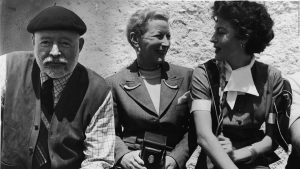

Interesting review – of course, Mary’s “How It Was” should be read to compare with any other ideas about her personality and relationships. I lean toward Ms Silman’s conclusions, though I should first read this book, I suppose.
Yes, Timothy, the review is in itself interesting. I will have to get this . Mary has never been my favorite but she did take a lot of abuse from Hemingway. Still she had choices. He could be a real bad force when he wanted to be. The review is a preview but I am very intrigued. Thanks for reading and commenting, Timothy. hope you and yours are well! Best, Christine